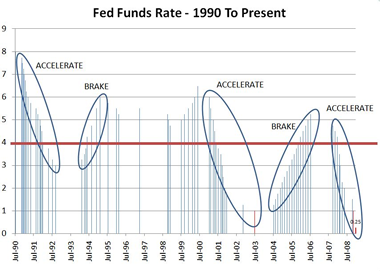This headline appeared in the online version of USA Today in Yahoo.
The nation's traffic lights are woefully inefficient and outdated, forcing frustrated commuters to sit in congestion, waste gasoline and pollute the air, a traffic engineering group said Wednesday.
Two-thirds of 378 traffic agencies in 49 states don't actively monitor traffic lights, or they simply respond to problems as they occur, the Washington-based Institute of Transportation Engineers reported.
Below is a copy of a letter I sent to Michigan officials.
September 9, 2003
| Governor Jennifer M. Granholm
P.O. Box 30013
Lansing, Michigan 48909
| Sen. Gilda Z. Jacobs
Post Office Box 30036
Lansing, MI 48909-7536 |
| The Road Commission for Oakland County
31001 Lahser Road
Beverly Hills, MI 48025 | Wayne County Department of Public Services
Administration Division
415 Clifford St., 8th Floor
Detroit, MI 48226 |
Subject: Traffic Management
As an owner of two homes in Oakland County and a frequent traveler in Wayne County, it is apparent that there is an inconsistent effort to manage traffic flow on major surface roads. This has a significant economic impact within Southeast Michigan in time lost and fuel wasted.
As an example, Newburgh Road in Livonia between Five Mile Road and Eight Mile Road is posted at 40 mph. The signal progression is precisely the opposite of the posted speed so that traffic is halted at every light in that stretch. Other examples of signal progression that is idiosyncratic are M24 (Lapeer Road between Silver Bell Road and the Palace (sometimes, but not always, the world’s shortest green light southbound at Brown Road), and Telegraph Road between Maple Road and Long Lake Road.
There are many other high traffic locations that I could cite, but the point should be clear: lack of signal progression is wasteful and too frequent. Given the amount of taxes dedicated to roads, a simple improvement that would immediately benefit all would be attention to signal progression. It is not rocket science or even difficult mathematics. With computer control over signals, it should be nothing more than simple diligence. This is an opportunity to make a noticeable improvement in traffic at very little cost. And this improvement is totally independent of road construction costs.
By the way, the first time I brought this subject up was in the 1980s… and I haven’t seen a lot of improvement since.
Sincerely,
Bruce Hall
To be fair, some improvements have been made, but overall, very little progress is evident. Let's presume that poorly timed lights and resulting congestion increase fuel consumption by 25%. At $2.25 per gallon, that means that you are spending about 50 cents or so of each gallon on the failure of traffic engineers, who are paid with your taxes, to do their jobs properly.









